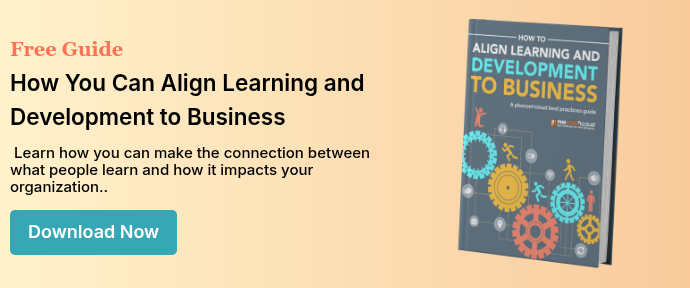This case demonstrates that by shifting our thinking from internal training measures to business outcome measures we can show clearly both the need for and the value of learning.
But this doesn’t mean internal training measures aren’t necessary. To make a valid correlation between learning and business outcomes, we need to show that learning took place. Participation, completion, and assessment data are essential to understanding the cause-and-effect relationship.
How to Get Started
Putting all of this together, we can recommend seven essential steps to grow your analytical capability by breaking down barriers.
 Make the first move. Start sharing aggregate assessment data across your organization. Pre- and post- training assessments targeting specific skills will demonstrate clearly that a change has happened. Follow-up reinforcement and assessment data will show that people are employing their new skills.
Make the first move. Start sharing aggregate assessment data across your organization. Pre- and post- training assessments targeting specific skills will demonstrate clearly that a change has happened. Follow-up reinforcement and assessment data will show that people are employing their new skills.- Create alliances. It is quite possible that long-standing silos make conversations difficult. Expect and prepare for it. You may need to start by cultivating a single ally.
- Get into the performance conversation. When people around the organization discuss business challenges, ask how better knowledge, skills, and behavior could help.
- Let your business leaders drive. Bring them into the analysis, decision and design processes. Help them solve their problems.
- Examine the existing performance data to identify the gaps. Expand understanding by talking with the people in the processes.
- Design targeted interactive training. Train to the specific behaviors your people need to change. Measure and report on the internal training measures and assessments.
- Measure the business results. Correlate the training measures with the outcome measures.
We hope this helps you on the way to sharing data across your organizational barriers. Companies that are breaking down data silos achieve better business results. Your company can be one of them.
PhenomᵉCloud is a full-service technology company dedicated to helping clients solve business problems, improve the capability of their people, and achieve better results.







Leave a Comment